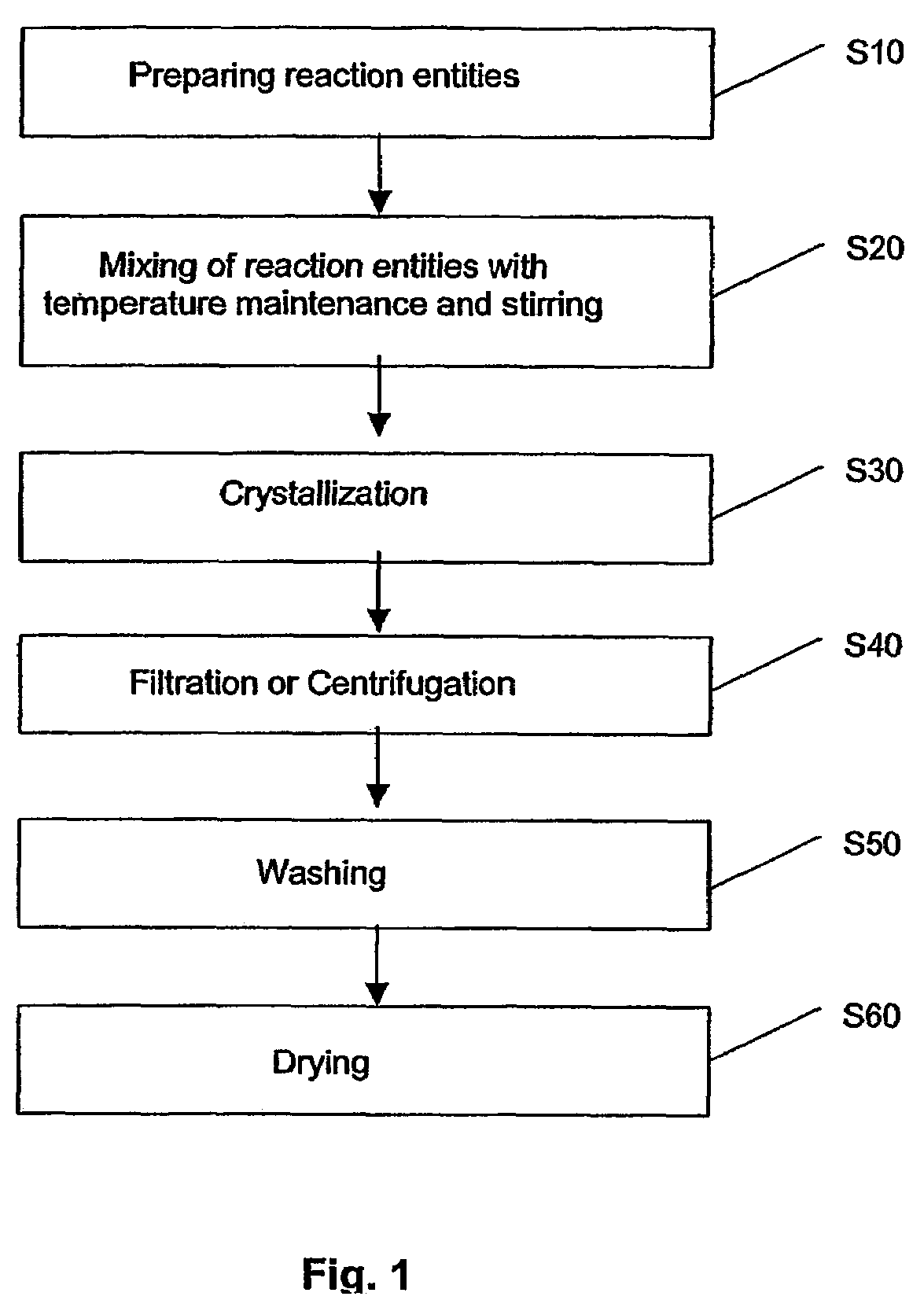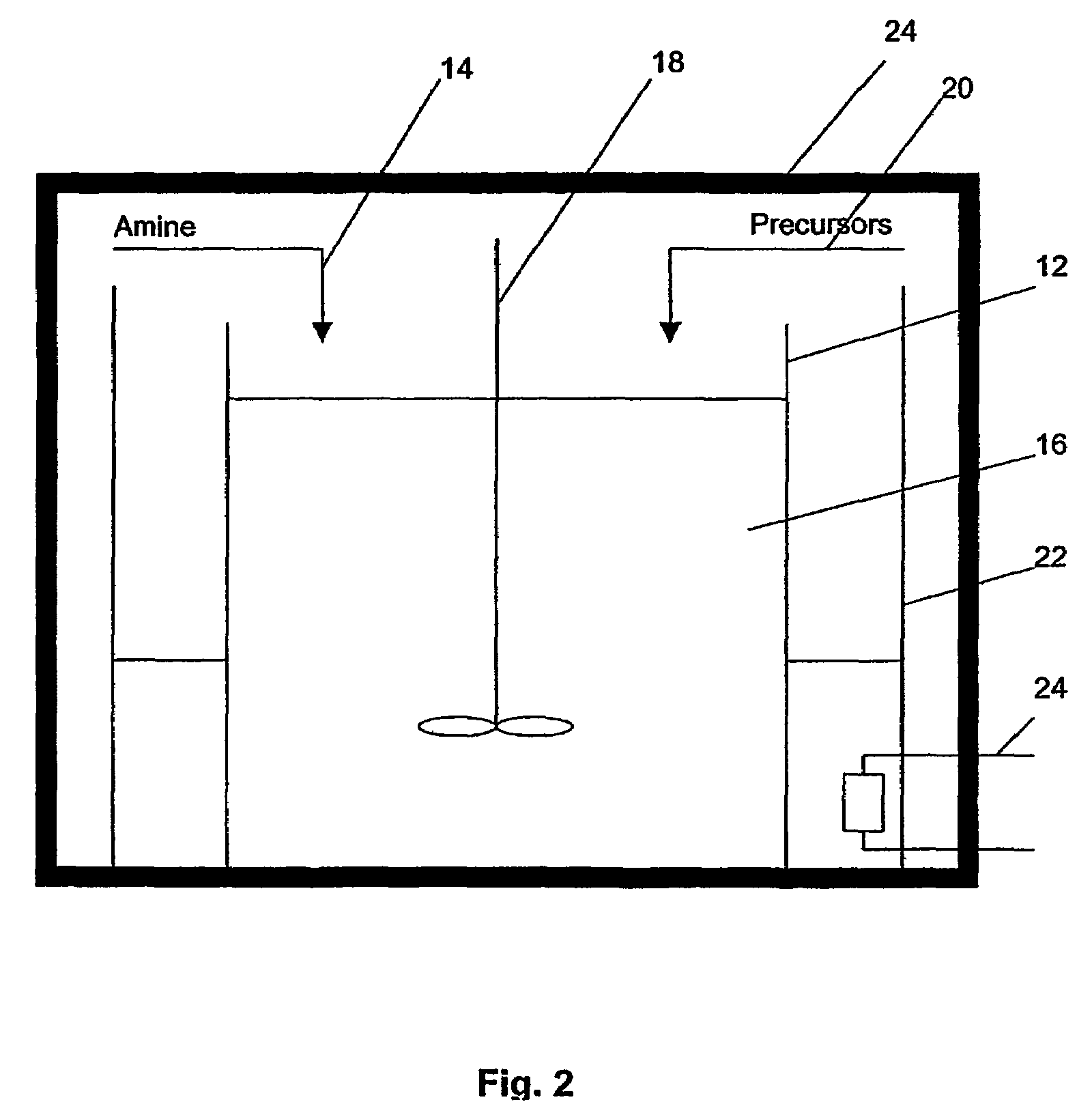Method of preparing metal chalcogenide particles
a technology of metal chalcogenide and metal chalcogenide, which is applied in the direction of mercury compounds, oxygen/ozone/oxide/hydroxide, cell components, etc., can solve the problems of reducing the efficiency of the reaction
- Summary
- Abstract
- Description
- Claims
- Application Information
AI Technical Summary
Benefits of technology
Problems solved by technology
Method used
Image
Examples
experiment 1
[0081]99% Hexadecylamine (HDA) was obtained from Sigma-Aldrich of St. Louis, Mo., United States of America, was dried and degassed at 120° C. before use with nitrogen.
[0082]Silver(I) thiobenzoate Ag(SCOPh) precursors crystals were derived from according to the report: V. V. Savant, J. Gopalakrishnan, C. C. Patel, Inorg. Chem. 1969, 9, 748. A degassed solution of 0.025 g of Ag(SCOPh) precursors crystals in 0.2 ml of trioctylphosphine (TOP) obtained from Sigma-Aldrich of St. Louis, Mo., United States of America was prepared. The mixture was injected into a hot HDA solution. This was repeated for a number of temperatures in the range of 80° C.-120° C., as given in Table 1 below.
[0083]After mixing, the pale yellow solution rapidly changed to brown. After 10 min, the reaction solution was cooled to room temperature, then ˜1 ml of toluene was added and Ag2S product precipitated with methanol. The precipitate was centrifuged, washed thoroughly with methanol and dried in vacuum overnight.
experiment 2
[0084]The experimental procedure for Example 1 was repeated whereby the Ag(SCOPh) precursors crystals were introduced into HDA at 60° C. and the mixture was heated to a desired temperature range of 100° C. to 120° C. In experiment 2, however, the Ag2S precipitate aged at that temperature for 30 minutes. The results are given in Table 2 below.
experiment 3
[0085]The experimental procedure for Example 1 except instead of HAD amine being used, Octylamine (OA), Dioctylamine (DOA), and Ethylenediamine (EA) were used.
PUM
| Property | Measurement | Unit |
|---|---|---|
| temperature | aaaaa | aaaaa |
| mean particle size | aaaaa | aaaaa |
| temperatures | aaaaa | aaaaa |
Abstract
Description
Claims
Application Information
 Login to View More
Login to View More - R&D
- Intellectual Property
- Life Sciences
- Materials
- Tech Scout
- Unparalleled Data Quality
- Higher Quality Content
- 60% Fewer Hallucinations
Browse by: Latest US Patents, China's latest patents, Technical Efficacy Thesaurus, Application Domain, Technology Topic, Popular Technical Reports.
© 2025 PatSnap. All rights reserved.Legal|Privacy policy|Modern Slavery Act Transparency Statement|Sitemap|About US| Contact US: help@patsnap.com



